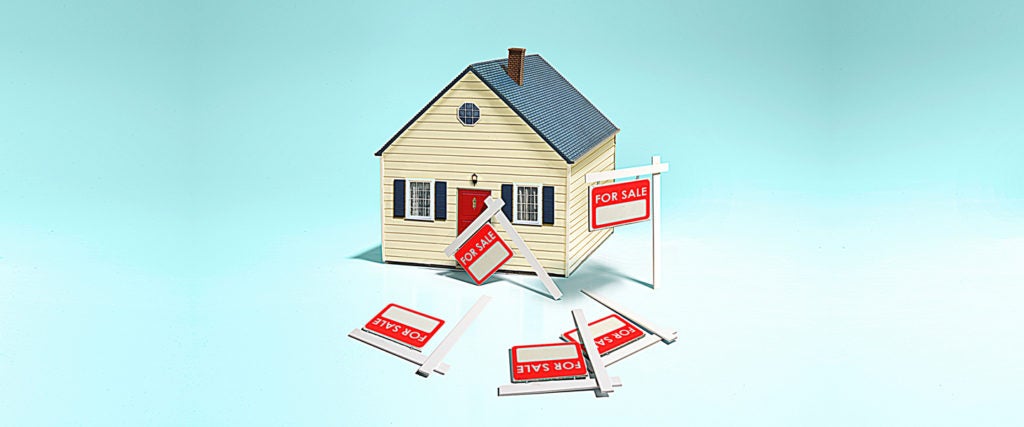Before COVID vanquished America’s economy, real-estate firm Unison calculated how long it would take the average worker to save up a 20-percent down payment on a standard home in any given city. Their findings: If you’re lucky, you might be able to buy a house before you die.
In L.A., it would take 43 years to save up for a down payment. In San Francisco, 40. In Seattle and Portland, 27 and 23, respectively. In New York and Miami, it would take a whole 36 years to save up that down payment.
To put an unfortunately plausible example out there, if I’m a 28-year-old in L.A. with a median income and an affinity for saving, I can look forward to buying a home at 71. And remember, that’s based on numbers from before the pandemic ruined everything. Yay…
This is a problem I’ve been grappling with as I wonder what my future holds (and attempt to ward off an endless stream of existential nightmares). Since 71 feels a little late to make my escape from the renter’s market, I’ve been eyeing another peculiar housing option: Tiny homes, touted as a potential solution to our unfortunate affordable housing crisis.
The price is right for tiny homes: The median cost in the U.S. for a tiny home is $59,884, compared to the latest number of $295,300 for a more traditional home, which can go way up, depending on where you want to live.
But one of the great things about buying a traditional home — something that gives those able to afford them an edge over everyone else — is their tendency to appreciate in value. For example, L.A. real estate appreciated 94.09 percent over the last decade, which means anyone who bought a decade ago is a whole lot richer now. If I were to buy a tiny home, can I expect the same? There are a couple things to consider here.
According to an email from the Tiny Home Builders team, “A tiny house by itself will not appreciate like a traditional home, nor will it depreciate like a travel trailer or RV. Even though a THOW — a tiny house on wheels — looks similar to a travel trailer or RV, they’re markedly different. In contrast to an RV, a THOW is built, if built by a reputable company, to the same building standards as a traditional home, so it will stand up to full-time living, meaning it will better retain its value. However, a lot of the appreciation of a traditional home comes from the land itself. Typically, when you buy a tiny house, you’re purchasing it independent of land. To compare apples to apples, if you purchased a tiny house and land for it to be placed on, it should have comparable appreciation.”
Going by that explanation, as with all home sales, the value may ultimately come down to where your tiny home is located, and whether it’s built into the land on a foundation, or on wheels. “The overall value of the house is in relationship to the property it sits on,” says Dan Fitzpatrick, president of the Tiny Home Industry Association. “Let’s say a house in San Jose, San Diego or L.A. that was built in the 1950s — the house itself has not appreciated, but the property it sits on certainly has.” If you have a tiny home on a highly desirable piece of land, it should appreciate in the same way a traditional home does. (Of course, that also means you need money to buy the land as well.)
But even if you go the THOW route and choose to, say, rent a space in a mobile home park or travel the States, the money you save on not buying a more expensive home may be enough to level the investment playing field. “Another motivating reason people choose to build and live in a tiny house is the cost savings on utilities and general living expenses,” says the Tiny Home Builders team. “Along with paying a fraction of the cost in utilities, a minimalist lifestyle inherently leads to less spending, especially on impulse, frivolous non-essentials.” In fact, many investment experts argue that traditional home prices are so damn high these days that renting at a lower price (or buying a cheap tiny home) and investing your savings into stocks instead is often a better option.
Not to mention, renovating and updating a tiny home is much, much cheaper than doing the same to a traditional home. “Let’s say you wanted granite counters in your kitchen,” Fitzpatrick says. “Well, in a normal house, that would cost you thousands of dollars, because that’s a lot of granite. In a tiny house, that’s a couple square feet.” Doing something like that could be a good, cheap way to help your tiny home retain its value, too.
Another important consideration is, while driving your tiny home around can cause some depreciation due to basic wear and tear, that mobility may also come in handy. “If the cost of living rises too much in one part of the country, they can always pick up and move to another, which could result in significant savings,” the Tiny Home Builders team points out. And if you’re really worried about depreciating as you move it around, Fitzpatrick says, “It’s built just like a house. It doesn’t get dated.”
So, maybe tiny homes really are a potential solution for us wannabe homeowners. I’ll definitely have to get rid of a few things, though.

